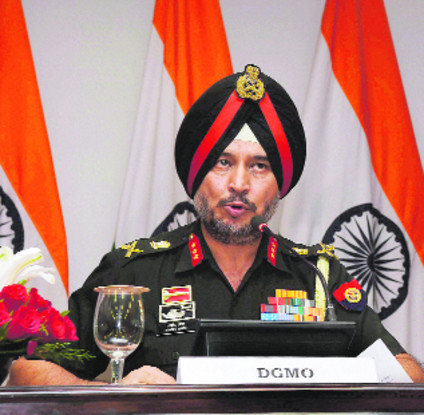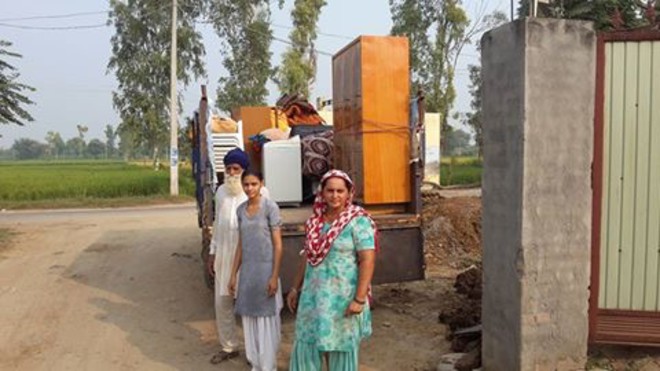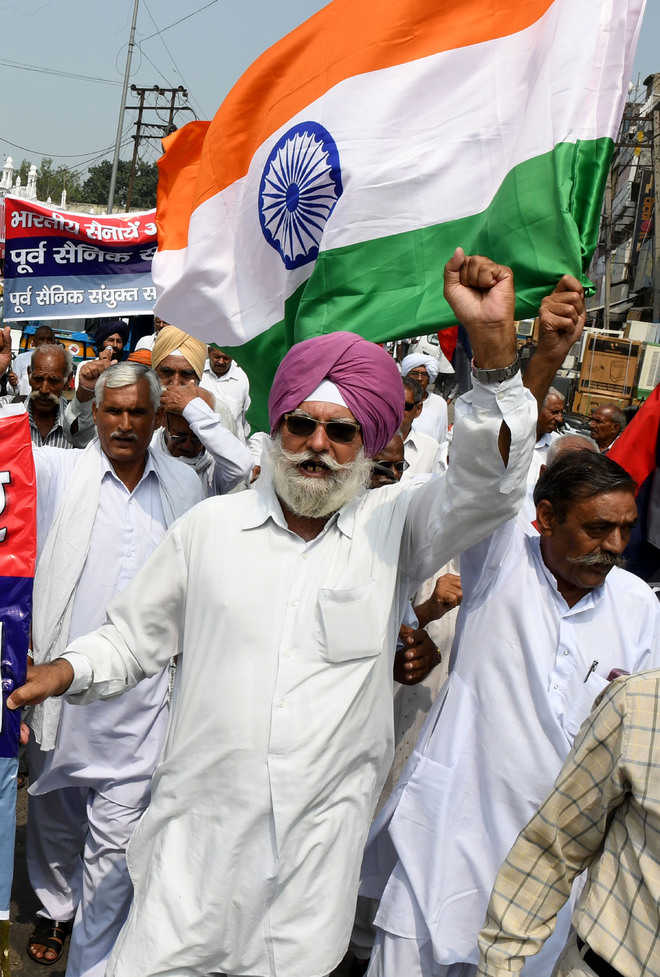MG Devasahayam
There is the same disturbing pattern that continues —confusion in command and control, abysmal physical security measures, leadership without responsibility, and political one-upmanship. Add to this, the media nautanki and Paki-bashing. The game of warmongering continues. However, we do need to ask a few tough questions.

Cost of subconventional war: Soldiers move around during an encounter with the militants after the recent attack on an Army base camp in Baramulla district of north Kashmir. PTI
ALL that Lt Gen Ranbir Singh, Director General Military Operations said in the afternoon of September 29 is that there were limited “surgical strikes” across the border to foil the attempts of terrorist teams planning to carry out infiltration and terrorist attacks in India resulting in “significant casualties” on them. He was emphatic when he said: “the operations aimed at neutralising the terrorists have since ceased. We do not have any plans for continuation of further operations.” But media pounced on it and along with assorted columnists/journalists, ex-diplomats, ex-Generals and party hawks went for the kill with unabashed hatred-peddling. As if eye-witnesses, they rattled out the number of launch pads attacked, Army units that conducted the strike, number of soldiers in the strike force, distance the soldiers walked, weapons used, ammunition fired and precise number of terrorists killed. They also talked of intense diplomatic engagement by National Security Advisor (NSA) and Foreign Secretary and the critical conversation between the former and his US counterpart. Nothing was left to the imagination. Electronic media went ballistic and encouraged use of expletives and jingoist language. Anchors and panellists did not separate fact from fiction. They just chose to be cheerleaders of the government and its spin-doctors. Saner voices were shut down as heretic. Debates were so scary that there was panic all over as if war was imminent. People living in the border areas of Punjab evacuated their abodes, abandoning crops ready for harvesting. Soon enough the cat was out of the bag. Mukesh Aghi, president of the US-India Business Council, a business advocacy organisation working to boost India-US trade, made a brazen statement that the expected increase in India’s defence spending due to the current stand-off with Pakistan has presented a “tremendous opportunity” to major US companies including Boeing, Lockheed Martin and Raytheon to expand their Indian operations. He went on to say that the technology on big- ticket items will definitely come from the US, either from the aircraft carriers or secured communications or from the missile side! The military view, echoed by some former Generals, is that the successful “surgical strikes” could kick-start a new phase of confrontation between India and Pakistan, possibly characterised by wholly new strategies which will be tested over time and refined. The big question is: confrontation for what purpose — to wage another full-fledged war after 45 long years? Unfortunately, an analysis of various reports shows that it is highly unlikely that India has the artillery and ammunition resources even to fight a limited war like Kargil. On war India has three options-conventional, sub-conventional and nuclear. An all-out nuclear war is out of question. Sub-conventional warfare involves stealth attacks and guerrilla tactics, similar to the Army’s surgical strikes. The third option is conventional warfare. Notwithstanding the importance of regional, strategic and political considerations and all that is lost in the rhetoric, the truth is India is not economically prepared to wage war in this manner. In any conventional warfare with Pakistan, it is the Indian Army that will be at the forefront. As of now, the revenue to capital ratio of Army spending is highly skewed in favour of the former as much as 85:15. This indicates that a large amount of budget spend for the Army is towards pay and allowances rather than for capital expenditure. Further examination of data suggests that ratio of indigenous acquisition to foreign sources for the Army is approximately 70:30. Since the Army’s artillery and ammunition needs are exclusively met by ordinance factories (OFs) it is over-dependent on domestic acquisition. This has made army very vulnerable in terms of its war wastage reserves (WWR). As per the Army’s operational doctrine, India is required to maintain a WWR of 40 “days of intense war” (war (I)). After the Kargil war of 1999, the Army headquarters introduced a new target of Minimum Accepted Risk Level (MARL), which was set at 20 war (I). The findings of a CAG report show that the Army’s current WWR stands at a critical low of 10 war (I) or even less as of March 2013. As per data in the report, of the 48 ammunition categories audited by CAG, it was found that OFs were unable to meet their production targets across 52 per cent of the product categories. Of this 52 per cent, in 23 per cent of the product categories, the shortfall was well over 50 per cent. The Army top-brass has been continuously pointing out this severe flaw to the government, but to no avail. Realising these constraints and shortfalls, they have been reticent and restrained. Coming to brass-tacks, the surgical strikes are the fallout of the failure of the Uri Brigade commander to secure his base, which led to his removal from that position. But retired Army brass insists it was an institutional weakness and not command failure. They want citizens and even uniformed personnel to be better sensitised about national expectations versus national willingness to part with more resources for defence and security. One of them has gone to the extent of asking the Army to unequivocally state that the nation will get the security it pays for and no more. One wonders whether mercenary language is creeping in! These worthies should realise that Uri closely followed the Pathankot air base mess-up by the Indian Air Force, National Security Guards, Indian Army and Defence Security Corps all put together. A disturbing pattern continues —–confusion in command and control, indifference to warning of a terrorist attack, abysmal physical security measures, leadership without responsibility, incoherent public communication and political one-upmanship. Added to this is the same old media nautanki and Paki-bashing. The regime change in 2014 has not made any difference. Why this? The answer is not far to seek. Despite the cacophony of reforms, ‘Make-in-India’, FDI, and what not, India’s basic governance and administration is at its nadir and national security forms part of this basic. In the event, India does not even have a national security architecture. We have Ministries of Home and External Affairs responsible for internal security and foreign affairs respectively. But we have no geopolitical-based foreign policy or national security system. Instead we have the NSA, an office that has neither institutional sanction nor parliamentary accountability. It is this entity which is in command of all affairs concerning external and internal security. We saw this happening in Pathankot and now in Uri, wherein the Army Chief was playing second fiddle. Unless this severe malady is addressed with urgency and remedied any amount of warmongering will be of no avail and India will continue to remain a nation sans security. There is a famous saying: “Freedom is the outcome of the tranquility of peace.” Without these two attributes in a nation there cannot be any “development.” War is the enemy of freedom and peace and, therefore, that of “development”. The question in everyone’s mind is whether Prime Minister Narendra Modi is abandoning the “development” agenda by drumming up the war cry. Or is it to cover-up the failure of this agenda in the first half of the Modi government? Will not warmongering, using soldiers as cannon-fodder, divert scarce resources towards massive arms purchase? Will this cost India security and development? These questions need to be asked and answers found. The sooner, the better. The writer is a former IAS officer .





















































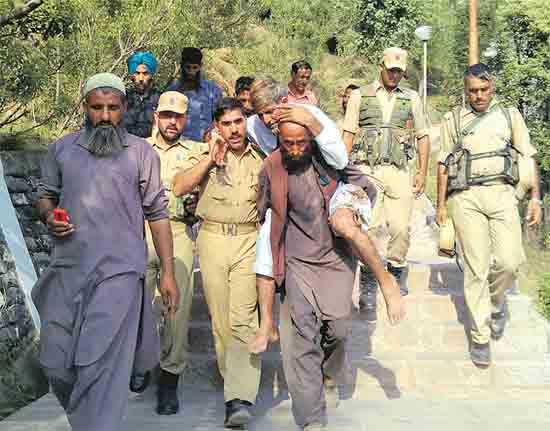
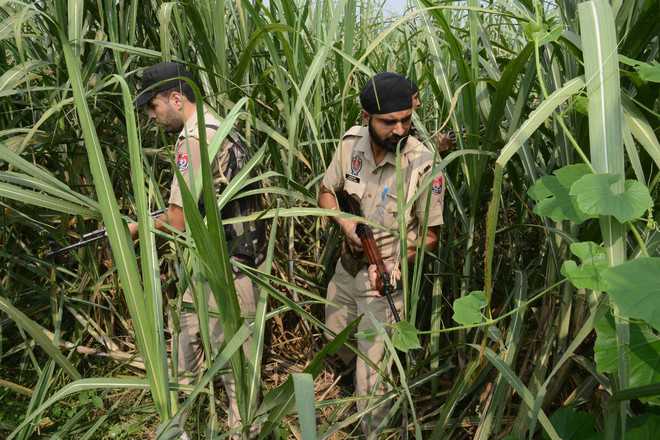

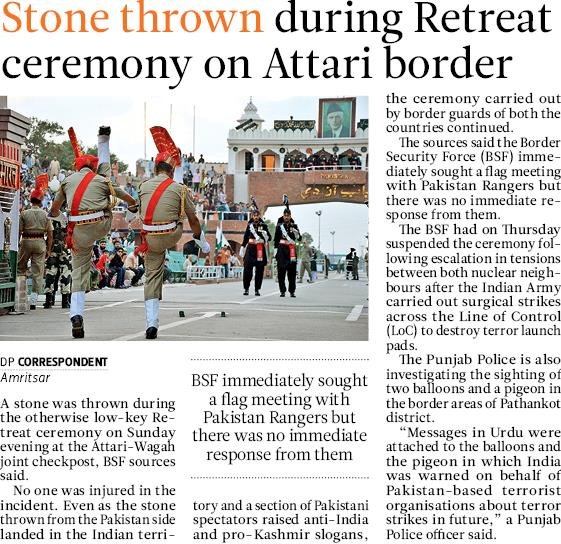

 People from border villages at a relief camp in Chabhal, Punjab, Friday. (Source: Express photo by Rana Simranjit Singh)
People from border villages at a relief camp in Chabhal, Punjab, Friday. (Source: Express photo by Rana Simranjit Singh)